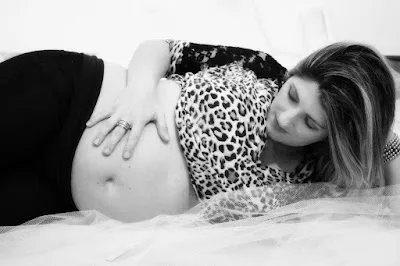During pregnancy, the importance of proper sleep positions cannot be overstated. Both maternal and fetal health are directly impacted by the quality and quantity of sleep a pregnant woman receives. A comfortable sleep position can significantly improve sleep quality, reduce discomfort, and ensure the well-being of both mother and baby.

The Importance of Sleep During Pregnancy
Health Benefits of Quality Sleep
Quality sleep plays a crucial role in the overall health and well-being of expectant mothers and their developing babies. Adequate sleep helps regulate hormone levels, supports the immune system, and reduces the risk of gestational complications. For the developing fetus, sufficient sleep is essential for growth and development. Furthermore, a well-rested mother is better equipped to cope with the physical and emotional demands of pregnancy, promoting a more positive and healthy experience.
Common Sleep Challenges Faced by Pregnant Women
Pregnant women often encounter a variety of sleep-related challenges as their bodies undergo significant changes. Some common issues include increased frequency of urination, difficulty finding a comfortable position, back pain, heartburn, and restless leg syndrome. Additionally, hormonal fluctuations can lead to insomnia, exacerbating these challenges. As the pregnancy progresses, the growing baby may also contribute to sleep disruptions by causing pressure on the diaphragm, making it harder to breathe comfortably.
Best Sleep Positions for Pregnant Women
Sleeping on the Left Side (SOS)
Sleeping on the left side (SOS) is widely recommended as the optimal sleep position for pregnant women. This position provides numerous benefits, including improved blood flow to the fetus, uterus, and kidneys. It also reduces pressure on the liver, which is located on the right side of the body. Improved blood flow ensures that the developing baby receives sufficient oxygen and nutrients, while reduced liver pressure helps maintain proper digestion and reduce the risk of heartburn.
Using Pillows for Support
Utilizing pillows for additional support and comfort can significantly enhance sleep quality for pregnant women. Placing a pillow between the knees helps maintain spinal alignment, alleviating back pain and discomfort. A full-body or pregnancy pillow can provide extra support to the abdomen, back, and hips, promoting a more comfortable and restful sleep. Experimenting with different pillow types and positions can help expectant mothers find the ideal arrangement that meets their unique needs and preferences.

Sleep Positions to Avoid During Pregnancy
Back Sleeping
Sleeping on the back during pregnancy poses several risks, such as reduced blood flow and increased pressure on the spine. This position can cause the weight of the growing uterus to compress the inferior vena cava, a large vein responsible for carrying blood back to the heart from the lower body. This compression may result in decreased blood flow to both the mother and the baby, potentially leading to dizziness, shortness of breath, and low blood pressure. Furthermore, back sleeping can exacerbate back pain and contribute to issues like sleep apnea and snoring.
Stomach Sleeping
As the pregnancy progresses, sleeping on the stomach becomes increasingly challenging and potentially harmful to the developing baby. This position places undue pressure on the growing uterus and may cause discomfort for the mother. It is best to avoid stomach sleeping, especially during the later stages of pregnancy, to ensure the safety and well-being of both the mother and the baby.
Tips for Better Sleep During Pregnancy
Maintaining a Consistent Sleep Schedule
Establishing and maintaining a consistent sleep schedule is essential for improving overall sleep quality during pregnancy. Going to bed and waking up at the same time each day helps regulate the body’s internal clock, making it easier to fall asleep and stay asleep throughout the night.
Creating a Relaxing Sleep Environment
Creating a comfortable and calming sleep environment is crucial for promoting restful sleep during pregnancy. Ensure the bedroom is cool, quiet, and dark, and consider using blackout curtains, white noise machines, or a fan to minimize disruptions. Invest in a supportive mattress and comfortable bedding to further enhance sleep quality.
Seeking Professional Help
If sleep issues persist or worsen despite implementing these strategies, it is crucial to consult with healthcare professionals. They can provide guidance and recommend appropriate interventions, such as cognitive-behavioral therapy for insomnia, sleep aids, or referrals to sleep specialists.
Conclusion
Adopting the best sleep position and implementing effective sleep strategies are vital for ensuring a healthy and comfortable pregnancy. By prioritizing sleep and making necessary adjustments, pregnant women can significantly improve their well-being and provide a nurturing environment for their developing babies.








